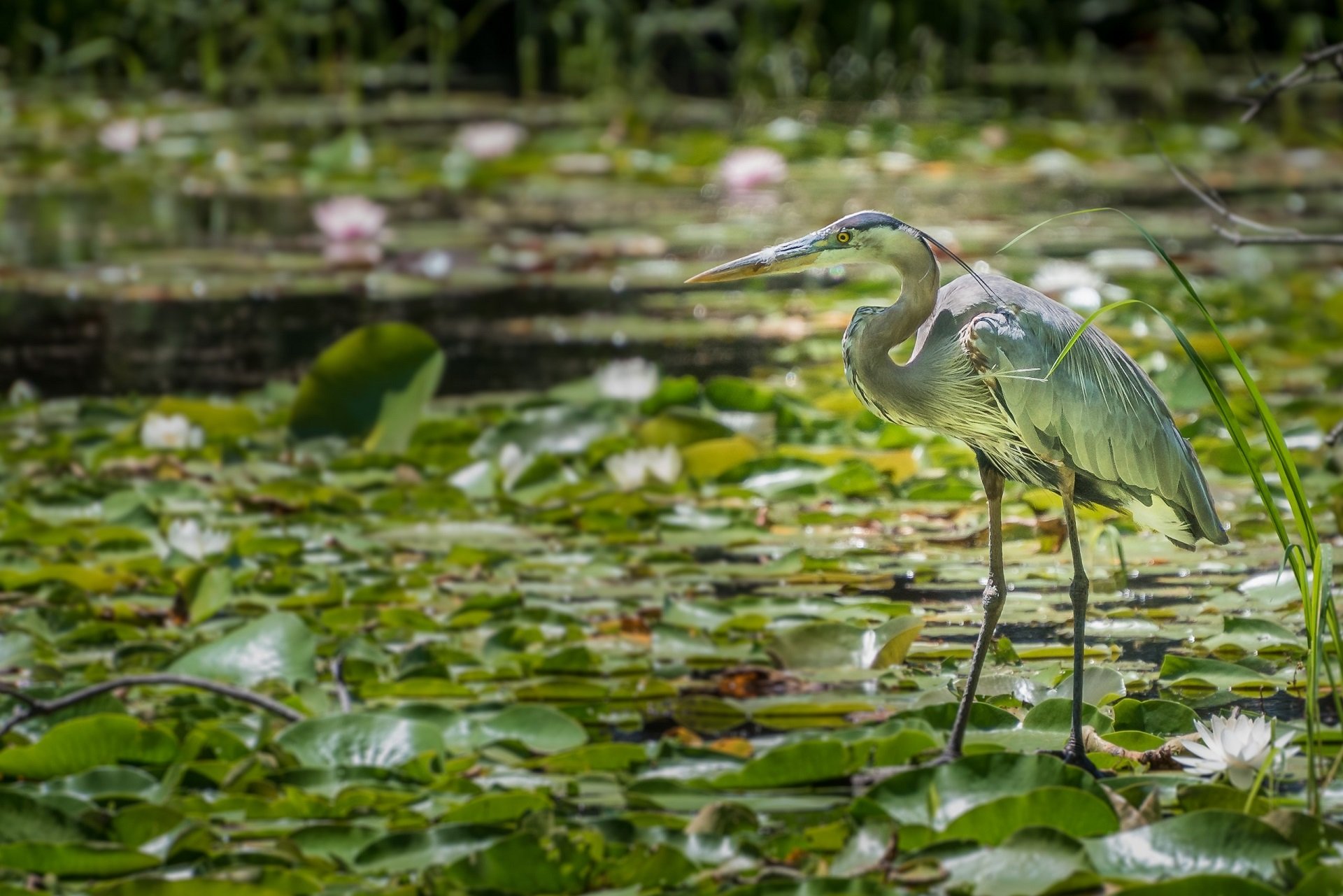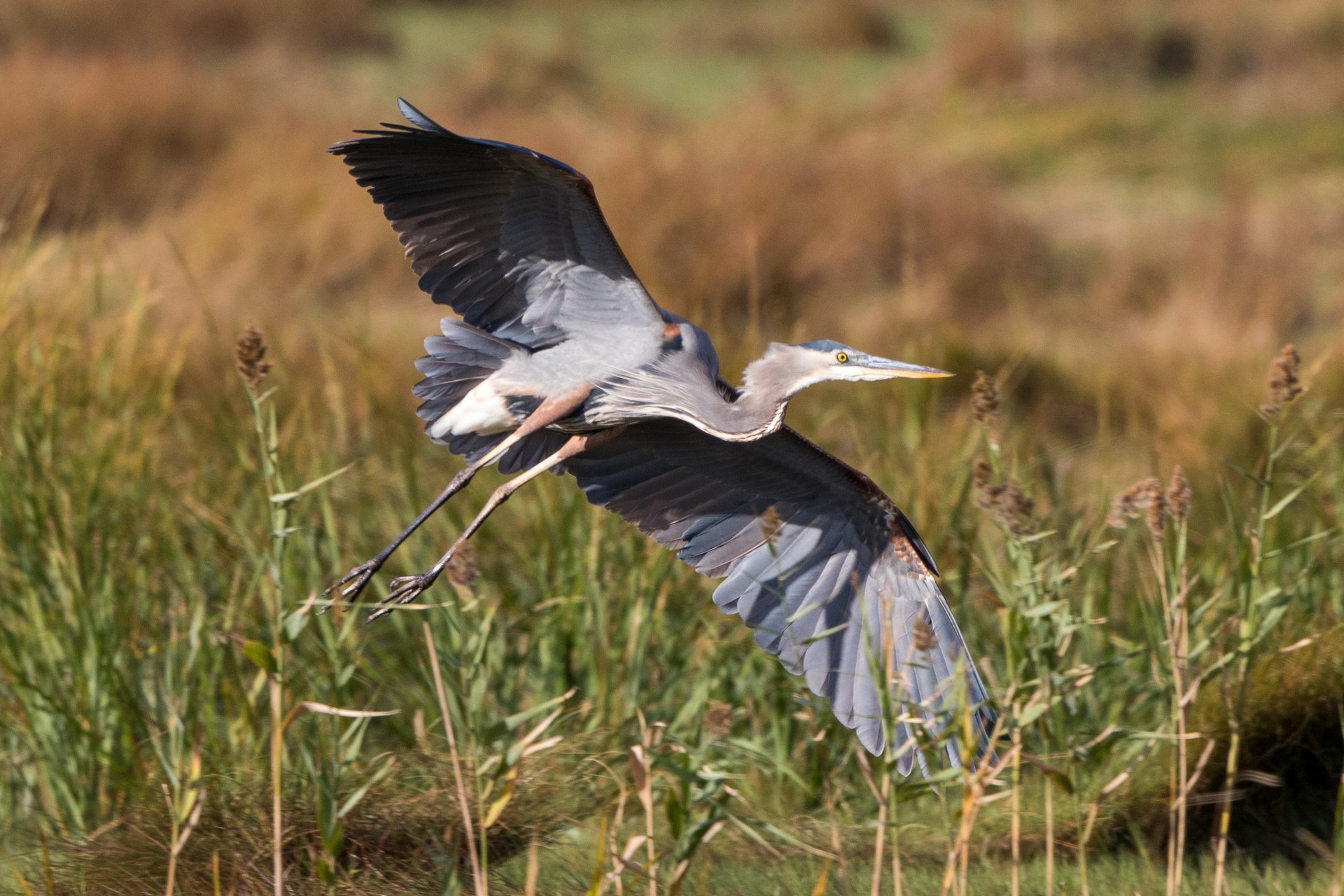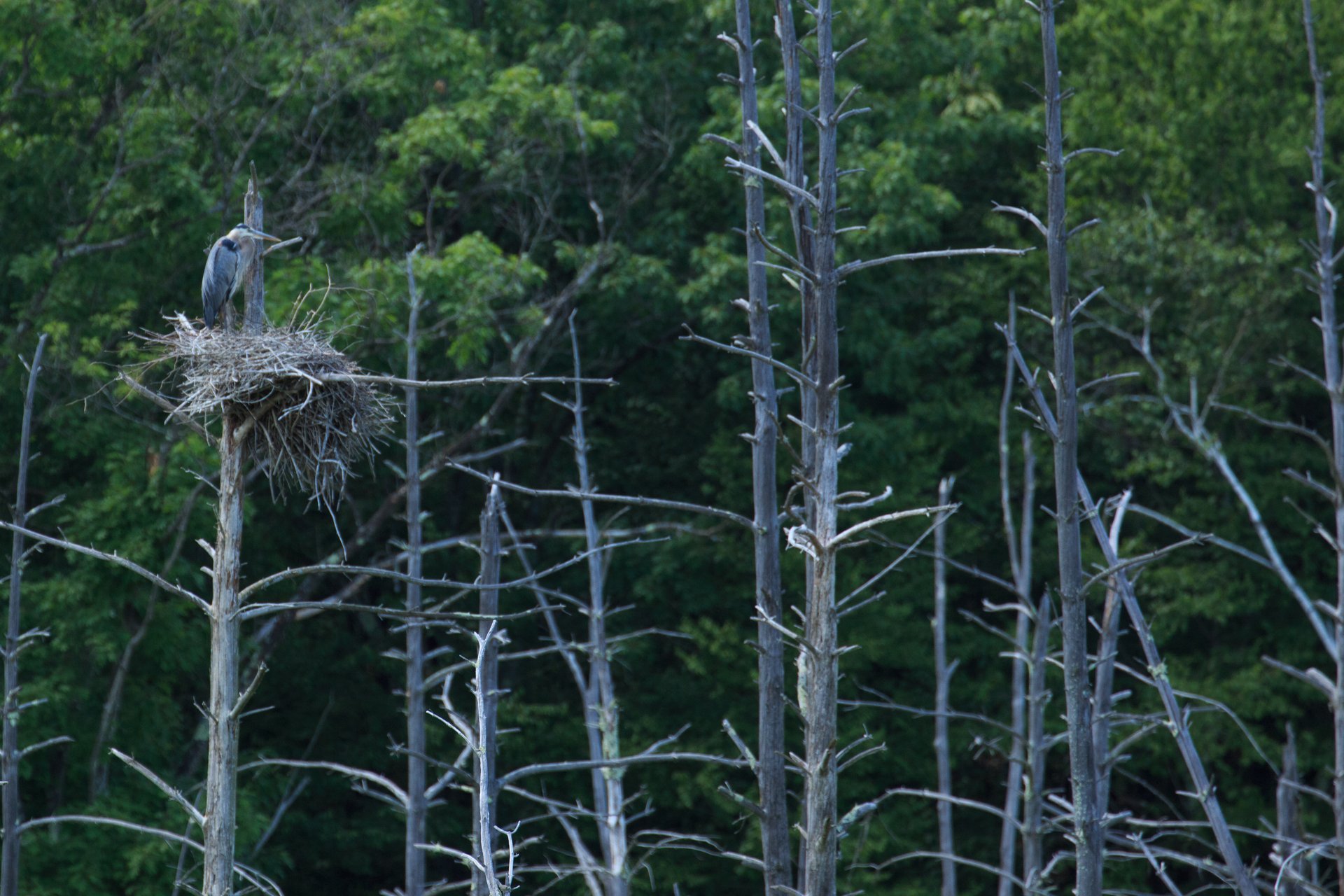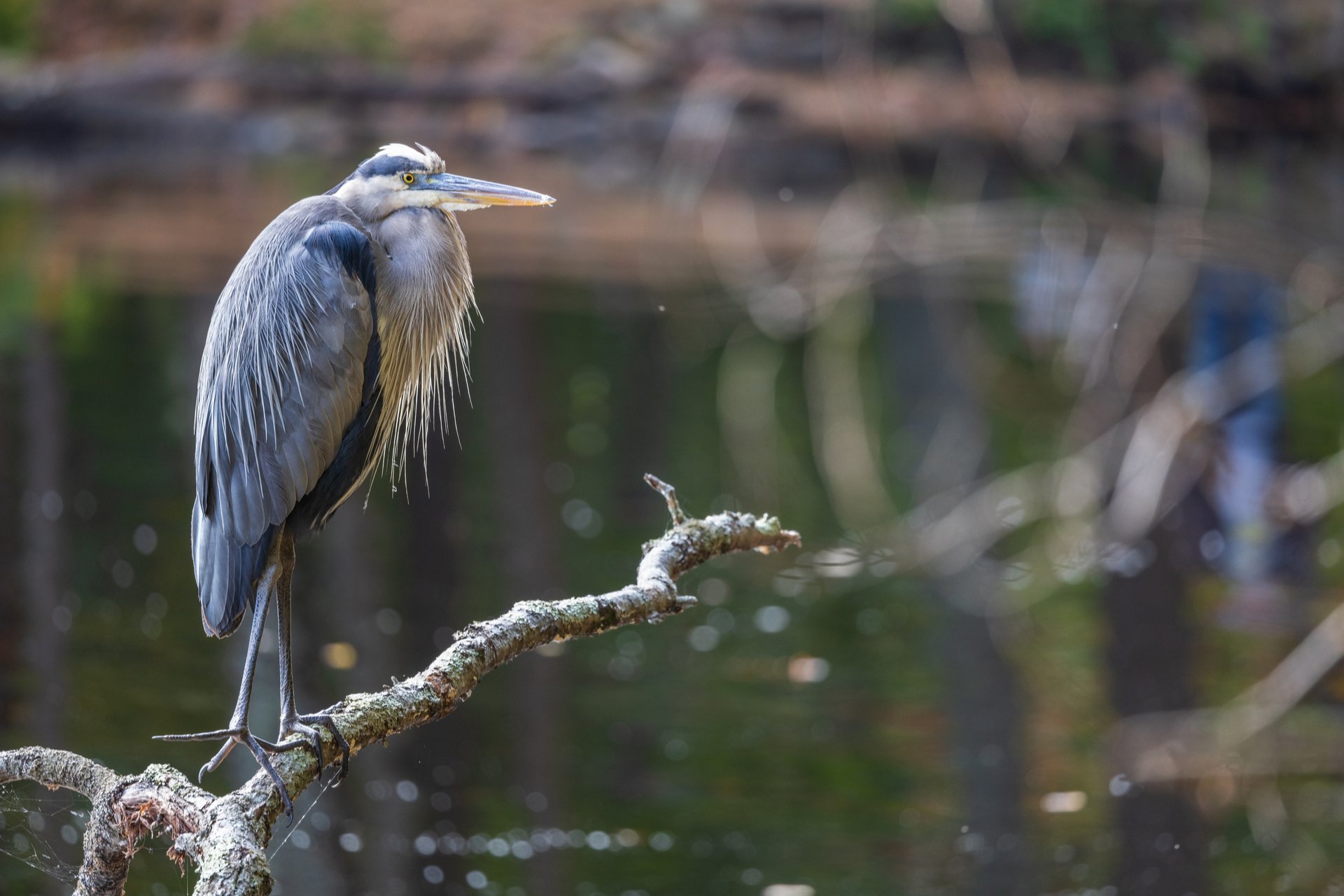Birds in Massachusetts
Great Blue Herons
Once a rare sight in the northeast U.S. due to hunting pressure and pollution, Great Blue Herons have staged a staggering comeback in the past few decades. Now, these statuesque wading birds can be seen at ponds, lakes, and rivers of all sizes, often in surprisingly urban areas. Their impressive size and graceful flight have won them many admirers.
How to Identify Great Blue Herons
Great Blue Herons are very tall birds (about 4 feet!), with long legs and sinuous necks. Only the pure white Great Egret approaches this stature among other Massachusetts birds. The "blue" for which the species is named is pale and subdued, and often appears gray or black in poor light. Great blue herons have straight, daggerlike bills for spearing fish, and adults have thin black plumes swept back behind their heads.
Great Blue Heron Behavior
The most common place to find Great Blue Herons is at the edge of a wetland, where they will stand stock-still, tracking the movements of fish and frogs and waiting for the perfect moment to strike. Although they will happily feed in backyard ponds and rivers in urban areas, the approach of humans tends to startle them, causing them to fly away while uttering a gravelly croak.
Great Blue Herons are widespread in North America. They nest from southeastern Alaska and central Canada, south through Florida and Mexico. They winter over much of its breeding range, which extends as far south as the West Indies and the Galapagos Islands.
Migrating great blues arrive in New England as early as the latter part of March and migrate southward between mid-July and late September. Some birds winter over and are found in coastal areas or where freshwater remains open.
What Do Great Blue Herons Eat?
Great Blue Herons feed mainly on fish, but their diet also includes, crabs, insects, frogs, snakes, salamanders, grasshoppers, dragonflies, aquatic insects, and, occasionally, small rodents.
Great Blue Heron Call
Great Blue Heron Life Cycle
Usually four eggs are laid, and, after about 28 days, the hatchlings emerge. At first, the young are nearly helpless, and both parents are kept busy supplying them with regurgitated food. Eventually, small fish are simply deposited in the nest for the chicks to pick up.
Young herons are able to fly in about 60 days. At around 90 days, they become independent and disperse throughout New England and beyond. The young do not breed until they are at least two years old. In a typical brood, only two young survive.
Nestling and fledgling mortality is attributed to a number of causes including starvation, falling out of a nest, predators (such as raccoons and foxes), and disturbance by people in the rookeries.
Great Blue Heron Rookeries
The increase in beavers in Massachusetts has resulted in swamps where trees have died, creating ideal habitat for nesting Great Blue Herons. Great Blue Herons nest communally in "rookeries" or "heronries" containing up to 50 pairs. Herons typically use the same rookery every year until eventually the trees collapse.
The nests are flat platforms made of sticks and lined with moss, pine needles, and other leaf material. The nests are added to each year, eventually becoming very bulky and measuring up to four feet in diameter.
They fly quite far afield in search of food during the breeding season and can often be seen flying at sunrise or sunset on huge, ponderous wings, with their long legs trailing behind and their necks curled back to tuck their head above their shoulders.
How to Deter Great Blue Herons
Conflicts between people and herons occasionally arise when a heron feeds in a fishpond stocked with exotic, expensive fish. If you have this problem, try scaring it away by going outside and shouting—most get the message after a few repetitions and don't come back.
If that doesn't work, you can place several 18-inch-high stakes around the pond. Using 3-inch-wide, silver mylar tape (found with the crepe paper in party-supply stores) crisscross the pond a number of times, securing the tape to the stakes. Before securing it, twist the mylar tape a few times and leave some slack so it moves in the breeze and reflects the light.
Great Blue Herons are protected by the Federal Migratory Bird Treaty Act of 1918. It is illegal to capture, possess, or cause harm to a Great Blue Heron or its nest or eggs.
How Mass Audubon is Supporting Birds in Massachusetts
Mass Audubon works at our wildlife sanctuaries and beyond to ensure that the nature of Massachusetts continues to thrive. By scientifically monitoring Massachusetts birdlife, Mass Audubon informs important conservation decisions and launches targeted initiatives to help at-risk species. In addition, fostering healthy habitats, supporting native species, and educating people about the importance of nature conservation is critical to our success. Learn more about our work
How You Can Support Birds in Massachusetts
Mass Audubon supports birds like the Great Blue Heron every day, but we couldn’t do it without the support of our 160,000+ members.
Help support Great Blue Herons, and birds like them, by becoming a member today.
Upcoming Bird Programs
Destination Birding With a Scone: North River Wildlife Sanctuary
-
North River Wildlife Sanctuary, Marshfield
-
Tuesday, January 20
8:00-11:00am
Adults
Owls of Massachusetts: Behavior, Habitats, & Conservation
-
Online
-
Tuesday, January 20
7:00-8:30pm
Adults
Owls of Massachusetts Series
-
Online
-
3 classes starting
Tuesday, January 20
7:00-8:30pm
Adults
Stay Connected
Don't miss a beat on all the ways you can get outdoors, celebrate nature, and get involved.






